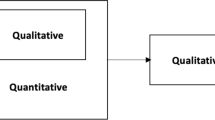Abstract
Developing technology that accounts for values has been achieved in many areas, including security, gaming, finance, engineering, and many more. The main methodological approach has been that of value sensitive design. But most of the work to date has been on the first of its three stages. The focus of this article is on advances related to its second stage, empirical investigation, and in particular the impact of contextual understanding in that stage. Although lessons can be learnt from other domains, the specific context of dementia means that there are nuances to understanding values, including justice and autonomy, that differ from other areas. The integration of value considerations in the development of assistive technology in dementia is explored in two broad categories: the traditional and ongoing need for fixed decision support, and adaptable decision support technologies. For fixed decision support the A&D Benchmark is particularly useful in design. But for adaptable technologies, that benchmark requires further development, including consideration of the values of additional stakeholders, such as the general public.





Similar content being viewed by others
References
Agich, G. J. (2003). Dependence and autonomy in old age: An ethical framework for long-term care. Cambridge: Cambridge University Press.
Alzheimer Europe. (2010). Alzheimer Europe report. The ethical issues linked to the use of assistive technology in dementia care. Luxembourg: Alzheimer Europe.
Beauchamp, T. L., & Childress, J. F. (2009). Principles of biomedical ethics. Oxford: Oxford University Press.
Begum, M., Huq, R., Wang, R., & Mihailidis, A. (2015). Collaboration of an assistive robot and older adults with dementia. Gerontechnology, 13, 405–419.
Bernoth, M., Burmeister, O. K., Morrison, M., Islam, M. Z., Onslow, F., & Cleary, M. (2016). The impact of a participatory care model on work satisfaction of care workers and the functionality, connectedness and mental health of community-dwelling older people. Issues in Mental Health Nursing,. doi:10.3109/01612840.2016.1149260.
Bernoth, M., Dietsch, E., Burmeister, O. K., & Schwartz, M. (2014). Information management in aged care: Cases of confidentiality and elder abuse. Journal of Business Ethics, 122, 453–460. doi:10.1007/s10551-013-1770-7.
Boger, J., Craig, T., & Mihailidis, A. (2013). Examining the impact of familiarity on faucet usability for older adults with dementia. BMC Geriatr, 13, 63. doi:10.1186/1471-2318-13-63.
Bolchini, D., Garzotto, F., & Paolini, P. (2008). Value-driven design for “infosuasive” web applications. In Paper presented at the World Wide Web conference series-WWW’2008.
Brey, P. (2000). Disclosive computer ethics. ACM SIGCAS Computers and Society, 30(4), 10–16.
Burmeister, O. K. (2010). Websites for seniors: Cognitive accessibility. International Journal of Emerging Technologies and Society, 8(2), 99–113.
Burmeister, O. K. (2012). What seniors value about online community. Journal of Community Informatics, 8(1).
Burmeister, O. K. (2013). Achieving the goal of a global computing code of ethics through an international-localisation hybrid. Ethical Space: The International Journal of Communication Ethics, 10(4), 25–32.
Burmeister, O. K., Bernoth, M., Dietsch, E., & Cleary, M. (2016). Enhancing connectedness through peer training for community dwelling older people: A person centred approach. Issues in Mental Health Nursing,. doi:10.3109/01612840.2016.1142623.
Burmeister, O. K., Islam, M. Z., Dayhew, M., & Crichton, M. (2015). Enhancing client welfare through better communication of private mental health data between rural service providers. Australasian Journal of Information Systems, 19, 1–14. doi:10.3127/ajis.v19i0.1206.
Burmeister, O. K., Weckert, J., & Williamson, K. (2011). Seniors extend understanding of what constitutes universal values. Journal of Information, Communication & Ethics in Society, 9(4), 238–252. doi:10.1108/14779961111191048.
Caine, K. E., Zimmerman, C. Y., Schall-Zimmerman, Z., Hazlewood, W. R., Camp, L. J., Connelly, K. H., & Shankar, K. (2011). DigiSwitch: A device to allow older adults to monitor and direct the collection and transmission of health information collected at home. Journal of Medical Systems, 35(5), 1181–1195.
Carstensen, L. L. (2006). The influence of a sense of time on human development. Science, 312(5782), 1913–1915. doi:10.1126/science.1127488.
Felzmann, H., Murphy, K., Casey, D., & Beyan, O. (2015). Robot-assisted care for elderly with dementia: is there a potential for genuine end-user empowerment? In Paper presented at the 10th ACM/IEEE international conference on human–robot interaction.
Flanagan, M., Howe, D. C., & Nissenbaum, H. (2005). Values at play: design tradeoffs in socially-oriented game design. In Paper presented at the Proceedings of the SIGCHI conference on human factors in computing systems, Portland, Oregon, USA.
Flanagan, M., Howe, D., & Nissenbaum, H. (2008). Values in design: Theory and practice. In J. Van Den Hoven & J. Weckert (Eds.), Information technology and moral philosophy (pp. 322–353). Cambridge: Cambridge University Press.
Flanagan, M., & Nissenbaum, H. (2007). A game design methodology to incorporate activist themes. In Paper presented at the computer–human interaction 2007, San Jose, CA.
Flanagan, M., Nissenbaum, H., Belman, J., & Diamond, J. (2007). A method for discovering values in digital games. In Paper presented at the annual conference of the digital games research association (DiGRA), Tokyo, Japan.
Friedman, B. (1996). Value-sensitive design. Interactions, 3(6), 17–23.
Friedman, B., Hendry, D. G., Huldtgren, A., Jonker, C., van Den Hoven, J., & Van Wynsberghe, A. (2015). Charting the Next Decade for Value Sensitive Design. In Paper presented at the 5th decennial aarhus conference on critical alternatives, Aarhus, Denmark.
Friedman, B., Kahn, P. H. J., & Borning, A. (2006). Value sensitive design and information systems. In P. Zhang & D. Galletta (Eds.), Human–computer interaction and management information systems: Foundations (pp. 348–372). New York: M. E. Sharpe.
Friedman, B., & Nissenbaum, H. (1996). Bias in computer systems. ACM Transactions on Information Systems, 14(3), 330–347. doi:10.1145/230538.230561.
Friedman, B., & Nissenbaum, H. (1997). Software agents and user autonomy. In Paper presented at the first international conference on autonomous agents.
Friedman, B., Thomas, J. C., Grudin, J., Nass, C., Nissenbaum, H., Schlager, M., & Shneiderman, B. (1999). Trust me, I’m accountable: Trust and accountability online. In Paper presented at the computer–human interaction ‘99 extended abstracts on human factors in computing systems, Pittsburgh, PA, USA.
Gordijn, J., & Akkermans, H. (2003). Value based requirements engineering: Exploring innovative e-Commerce ideas. Requirements Engineering Journal, 8(2), 114–134.
Jonsson, K. (2004). A user interface for benefit-cost analysis. (Master’s thesis), Stockholm Royal Institute of Technology, Stockholm.
Knobel, C., & Bowker, G. C. (2011). Computing ethics: Values in design. Communications of the ACM, 54(7), 26–28.
Leveson, N. G. (1991). Software safety in embedded computer systems. Communications of the ACM, 34(2), 34–36.
Lin, L., Czarnuch, S., Malhotra, A., Yu, L., Schroeder, T., & Hoey, J. (2014). Affectively aligned cognitive assistance using Bayesian affect control theory. In Paper presented at the Proceedings of International Workconference on Ambient Assisted Living (IWAAL), Belfast, UK.
Manders-Huits, N. (2010). What values in design? A critical analysis of value-sensitive design. Science and Engineering Ethics, 17(2), 271–287.
Messerly, J. G. (2007). Disclosive computer ethics? ACM SIGCAS Computers and Society, 37(1), 18–21. doi:10.1145/1273353.1273355.
Niemeijer, A. R., Depla, M., Frederiks, B., Francke, A. L., & Hertogh, C. (2014). The use of surveillance technology in residential facilities for people with dementia or intellectual disabilities: A study among nurses and support staff. American Journal of Nursing, 114(12), 28–37.
Novitzky, P., Smeaton, A. F., Chen, C., Irving, K., Jacquemard, T., O’Brolcháin, F., & Gordijn, B. (2015). A review of contemporary work on the ethics of ambient assisted living technologies for people with dementia. Science and Engineering Ethics, 21(3), 707–765. doi:10.1007/s11948-014-9552-x.
Pakrasi, S., Burmeister, O. K., McCallum, T. J., Coppola, J. F., & Loeb, G. (2015). Ethical telehealth design for users with dementia. Gerontechnology, 13(4), 383–387. doi:10.4017/gt.2015.13.4.002.00.
Petersen, R. C., & Negash, S. (2008). Mild cognitive impairment: An overview. CNS Spectrums, 13(1), 45–53.
Schikhof, Y., Mulder, I., & Choenni, S. (2010). Who will watch (over) me? Humane monitoring in dementia care. International Journal of Human–Computer Studies, 68(6), 410–422. doi:10.1016/j.ijhcs.2010.02.002.
Schneiderman, B., & Plaisant, C. (2010). Designing the user interface (5th ed.). Sydney: Addison-Wesley.
Sharkey, A. J. C. (2014). Robots and human dignity: The effects of robot care on the dignity of older people. Ethics and Information Technology, 16(1), 53–75. doi:10.1007/s10676-014-9338-5.
Sharkey, A. J. C. (2016). Should we welcome robot teachers? Ethics and Information Technology,. doi:10.1007/s10676-016-9387-z.
Slote, M. (2010). Justice as a virtue. In E. N. Zalta (Ed.), Stanford encyclopaedia of philosophy. Stanford, CA: Stanford University.
Solomon, D. B. (2014). Employee and Organization Security Value Alignment Through Value Sensitive Security Policy Design. (PhD Dissertation), Nova Southeastern University. Retrieved from http://nsuworks.nova.edu/gscis_etd/4.
Spiekermann, S. (2015). Ethical IT innovation—A value-based system design approach. New York: Taylor & Francis.
Teipel, S., Babiloni, C., Hoey, J., Kaye, J., Kirste, T., & Burmeister, O. K. (2016). Information and communication technology solutions for outdoor navigation in dementia. Alzheimer’s & Dementia: The Journal of the Alzheimer’s Association,. doi:10.1016/j.jalz.2015.11.003.
van den Hoven, J. (2006). ICT and value sensitive design. In Paper presented at the information society: Governance, ethics and social consequences, Namur, Belgium.
van den Hoven, J., & Manders-Huits, N. (2009). Value-sensitive design. In J. K. B. Olsen, S. A. Perdersen & V. F. Hendricks (Eds.), A companion to the philosophy of technology (pp. 477–480). West Sussex: Wiley-Blackwell.
Van Gorp, A. (2005). Ethical issues in engineering design: Safety and sustainability. In P. Kroes & A. Meijers (Eds.), Simon Stevin series in the philosophy of technology (Vol. 2). TUDelft, Netherlands: Delft University of Technology and Eindhoven University of Technology.
van Wynsberghe, A. (2013). Designing robots for care: Care centered value-sensitive design. Science and Engineering Ethics, 19(2), 407–433. doi:10.1007/s11948-011-9343-6.
van Wynsberghe, A. (2015). Healthcare robots: Ethics. Design and Implementation: Ashgate Publishing Ltd.
Varelius, J. (2006). The value of autonomy in medical ethics. Medicine, Health Care and Philosophy, 9(3), 377–388. doi:10.1007/s11019-006-9000-z.
Yetim, F. (2011). Bringing discourse ethics to value sensitive design: Pathways toward a deliberative future. AIS Transactions on Human–Computer Interaction, 3(2), 133–155.
Acknowledgments
This paper was initially presented as an invited keynote titled: “Entwicklung technischer Assistenz unter Berücksichtigung der Werte der Betroffenen”, for the Robert Bosch Interdisciplinary Symposium, Berlin, Germany, October 2015. The symposium was titled: “Technische Assistenzsysteme für Patienten mit Demenz im Krankenhaus unter dem Leitbild Entstigmatisierung und Selbstbestimmtheit”. Case study 2 is based on a 2014–2015 project called “Situationsadaptive Navigationsassistenz für Demenzpatienten auf Basis kausaler Modelle” (SiNDeM). It was funded by the German Federal Ministry of Education and Research (BMBF 16SV7091). The chief investigators were T. Kirste (Lead) and S. Teipel. Other investigators were C. Heine, R. Henkel, P. Koldrack, and K. Zarm. Partners to the project were O. Burmeister (Charles Sturt University) and Grey Innovation Pty Ltd.
Author information
Authors and Affiliations
Corresponding author
Rights and permissions
About this article
Cite this article
Burmeister, O.K. The development of assistive dementia technology that accounts for the values of those affected by its use. Ethics Inf Technol 18, 185–198 (2016). https://doi.org/10.1007/s10676-016-9404-2
Published:
Issue Date:
DOI: https://doi.org/10.1007/s10676-016-9404-2




